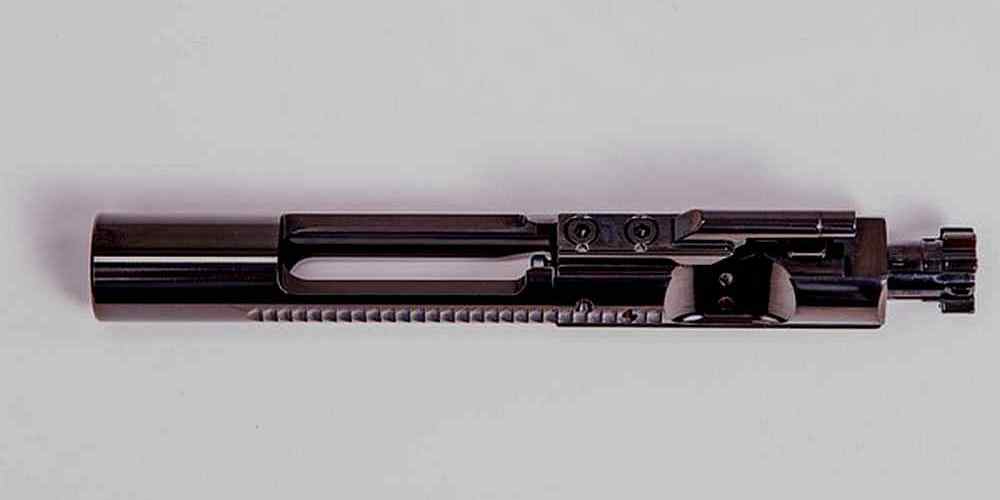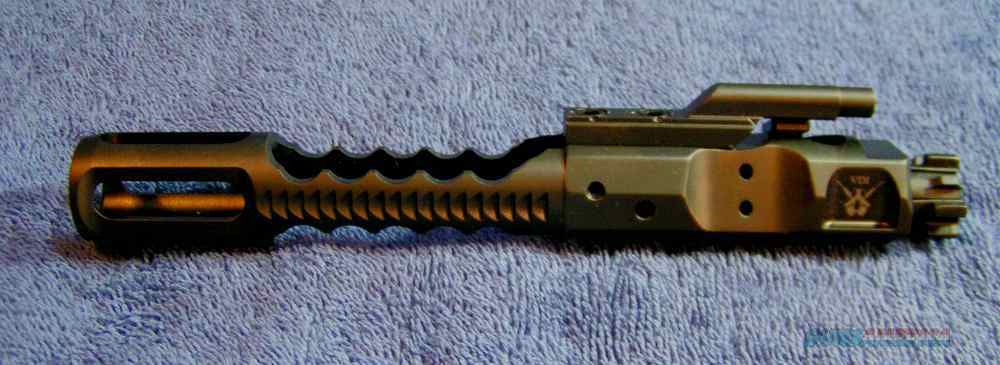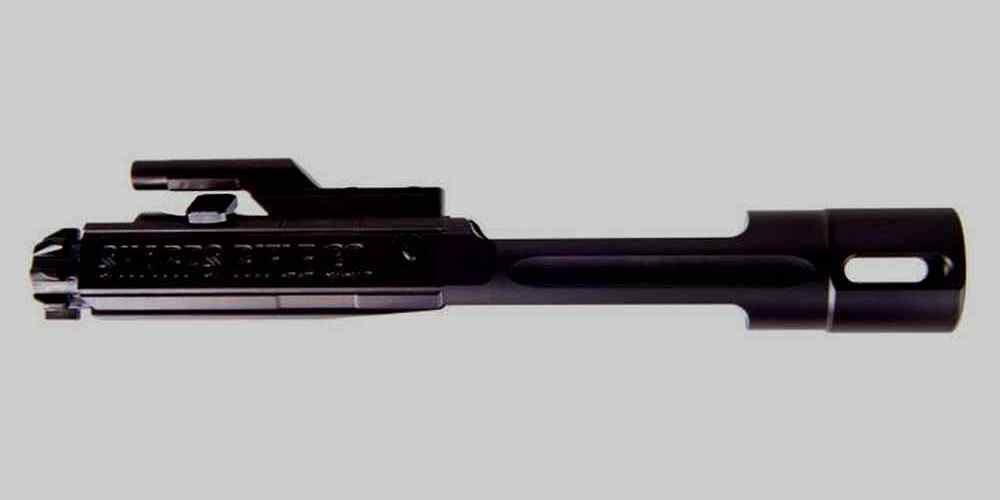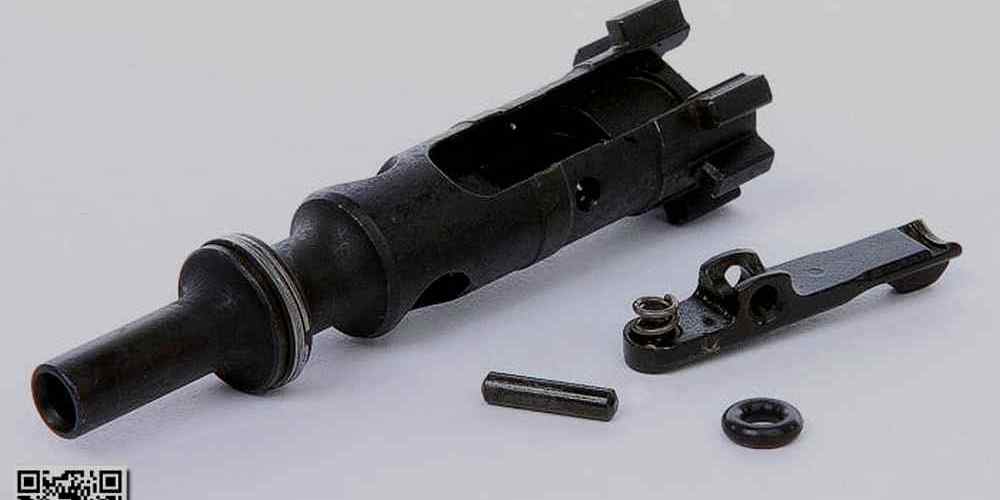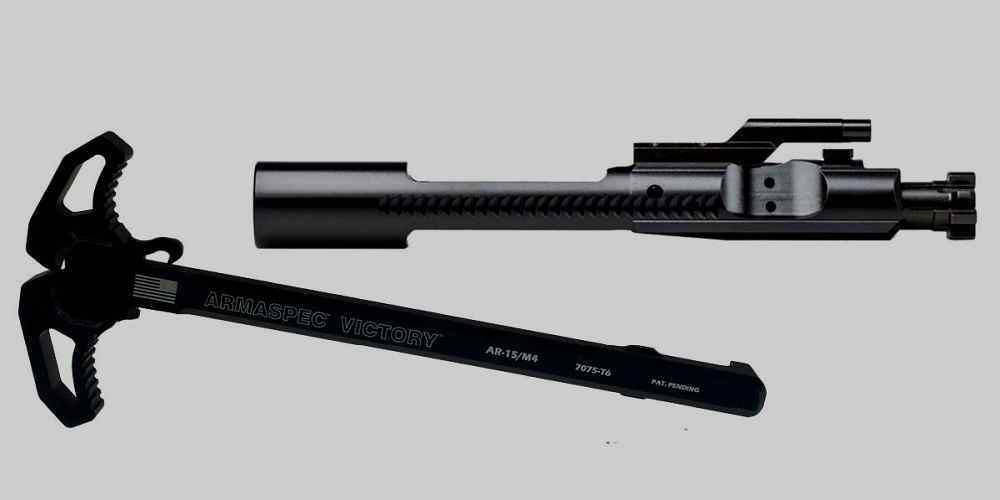Understanding the language of AR15 BCG markings.
Different Types of AR15 BCG Markings
If you’re a gun enthusiast or a proud owner of an AR15 rifle, you may have come across the term “BCG markings” when researching or shopping for parts. BCG stands for Bolt Carrier Group, which is a crucial component of the AR15 rifle. The markings on the BCG can provide valuable information about its manufacturer, material, and specifications. In this article, we will decode some of the common AR15 BCG markings to help you better understand your rifle and make informed decisions when upgrading or replacing parts.
One of the most common markings you may encounter on an AR15 BCG is the manufacturer’s logo or initials. This can give you a clue about the quality and reputation of the BCG. Some well-known manufacturers of AR15 BCGs include BCM (Bravo Company Manufacturing), Aero Precision, and Toolcraft. If you see one of these logos on your BCG, you can rest assured that you are dealing with a reputable brand that produces high-quality parts.
Another important marking to look out for is the material used in the construction of the BCG. Most AR15 BCGs are made from either 8620 steel or 9310 steel. The numbers indicate the type of steel used, with 9310 steel being slightly stronger and more durable than 8620 steel. If you see “9310” stamped on your BCG, you can be confident that it is made from a premium material that will withstand the rigors of shooting and last for years to come.
In addition to the material, some BCGs may also have markings indicating the type of coating or finish applied to the surface. Common coatings include phosphate, nitride, and nickel boron. Each coating has its own benefits in terms of durability, lubricity, and ease of cleaning. For example, a nickel boron-coated BCG will have a slick surface that reduces friction and makes cleaning a breeze. Pay attention to these markings to choose a BCG with the coating that best suits your needs and preferences.
Some AR15 BCGs may also have markings indicating the type of bolt used in the group. The bolt is another critical component of the BCG that is responsible for locking and unlocking the rifle’s action. Common bolt markings include “MPI” (Magnetic Particle Inspected) and “HP” (High Pressure Tested). These markings indicate that the bolt has undergone rigorous testing to ensure its strength and reliability under high-pressure conditions. If you see these markings on your BCG, you can trust that your rifle is equipped with a bolt that meets industry standards for safety and performance.
In conclusion, decoding AR15 BCG markings can provide valuable insights into the quality, material, and specifications of your rifle’s bolt carrier group. By paying attention to the manufacturer’s logo, material, coating, and bolt markings, you can make informed decisions when selecting or upgrading your BCG. Whether you are a seasoned gun enthusiast or a novice AR15 owner, understanding these markings will help you appreciate the craftsmanship and engineering that goes into this essential component of your rifle. So next time you inspect your AR15 BCG, take a closer look at the markings and unlock the secrets they hold about your rifle’s performance and reliability.
Understanding the Importance of BCG Markings
If you’re a gun enthusiast or someone who is new to the world of firearms, you may have come across the term “AR15 BCG markings” and wondered what they mean. Understanding these markings is crucial for anyone who owns or plans to own an AR15 rifle, as they can provide valuable information about the bolt carrier group (BCG) and its compatibility with different AR15 platforms.
BCG markings are typically found on the side of the bolt carrier, and they can vary depending on the manufacturer. These markings may include the manufacturer’s logo, serial number, and other identifying information. However, the most important markings to pay attention to are those that indicate the type of material used in the BCG and its compatibility with different AR15 platforms.
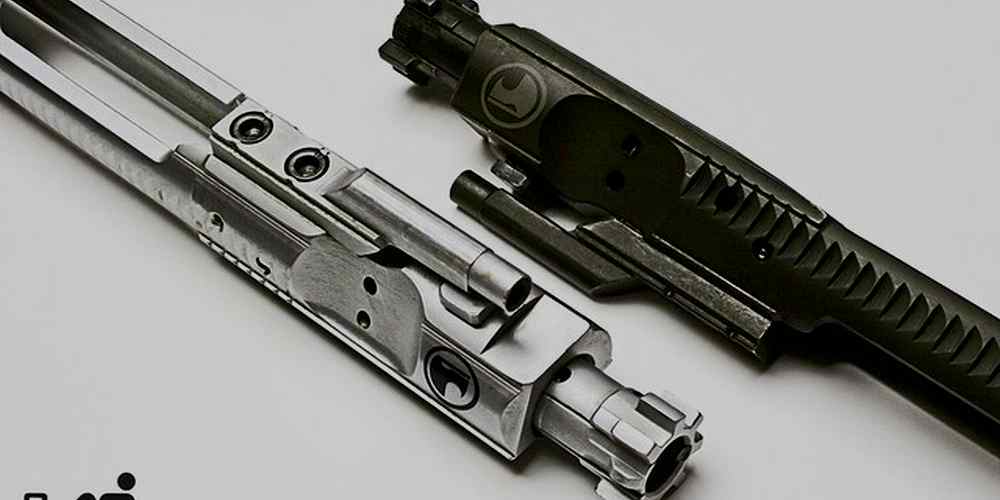
One of the most common markings you may come across is “MPI” or “Magnetic Particle Inspected.” This indicates that the BCG has undergone a rigorous testing process to ensure that there are no defects or cracks in the metal. This is important for ensuring the safety and reliability of your AR15 rifle, as any defects in the BCG could lead to malfunctions or even catastrophic failures.
Another important marking to look out for is the material used in the BCG. Most BCGs are made from either 8620 steel or Carpenter 158 steel, both of which are high-quality materials that are known for their durability and strength. However, some manufacturers may use different materials, so it’s important to check the markings to ensure that you are getting a BCG made from the right material for your needs.
In addition to the material and testing markings, you may also come across markings that indicate the type of coating or finish used on the BCG. Common coatings include phosphate, nitride, and chrome, each of which offers different levels of corrosion resistance and lubricity. Understanding these markings can help you choose the right BCG for your specific needs, whether you are looking for a BCG that is easy to clean or one that is highly resistant to wear and tear.
When shopping for a BCG, it’s important to pay attention to these markings and do your research to ensure that you are getting a high-quality product that meets your needs. Some manufacturers may use proprietary markings that can be confusing to decipher, so don’t hesitate to reach out to the manufacturer or a knowledgeable gunsmith for clarification.
In conclusion, decoding AR15 BCG markings is an important step in understanding the quality and compatibility of your bolt carrier group. By paying attention to these markings and doing your research, you can ensure that you are getting a BCG that is safe, reliable, and well-suited to your AR15 rifle. Don’t overlook the importance of these markings when shopping for a BCG, as they can provide valuable information that can help you make an informed decision.
How to Identify Quality BCG Markings
If you’re a gun enthusiast or a firearms owner, you’re probably familiar with the AR15 rifle. This popular firearm has become a staple in the shooting community for its versatility, accuracy, and customization options. One crucial component of the AR15 is the bolt carrier group (BCG), which plays a vital role in the rifle’s function. When it comes to selecting a quality BCG for your AR15, understanding the markings on the BCG can help you make an informed decision.
BCG markings can provide valuable information about the manufacturer, material, and specifications of the bolt carrier group. By decoding these markings, you can ensure that you’re getting a high-quality BCG that meets your needs and preferences. In this article, we’ll discuss how to identify quality BCG markings and what you need to know before making a purchase.
One of the most common markings you’ll find on a BCG is the manufacturer’s logo or name. This can give you insight into the reputation and quality of the BCG. Some well-known manufacturers of BCGs include Aero Precision, BCM, and Toolcraft. By choosing a BCG from a reputable manufacturer, you can have confidence in the reliability and performance of the bolt carrier group.
In addition to the manufacturer’s markings, you may also come across other symbols or codes on the BCG. These markings can indicate the material used in the construction of the BCG, such as Carpenter 158 steel or 9310 steel. The material of the BCG can impact its durability, strength, and longevity, so it’s essential to pay attention to these markings when selecting a BCG for your AR15.
Another important aspect to consider when decoding BCG markings is the coating or finish applied to the bolt carrier group. Common coatings include phosphate, nitride, and nickel boron. Each coating has its advantages and disadvantages in terms of durability, lubricity, and ease of cleaning. By understanding the markings related to the coating, you can choose a BCG that best suits your needs and preferences.
When examining BCG markings, it’s also crucial to look for any additional specifications or codes that may provide information about the BCG’s design or features. For example, you may find markings indicating whether the BCG is full auto rated, MPI tested, or shot peened. These specifications can give you insight into the performance and reliability of the BCG under various conditions.
In conclusion, decoding AR15 BCG markings is essential for identifying a quality bolt carrier group that meets your needs and preferences. By understanding the manufacturer’s markings, material, coating, and specifications, you can make an informed decision when selecting a BCG for your AR15. Whether you’re a seasoned shooter or a novice firearms owner, paying attention to BCG markings can help you choose a reliable and high-performance bolt carrier group for your AR15.
Common Misconceptions about AR15 BCG Markings
If you’re a gun enthusiast or a proud owner of an AR15 rifle, you may have come across the term “BCG markings” at some point. BCG stands for Bolt Carrier Group, which is a crucial component of the AR15 rifle. The markings on the BCG can provide valuable information about its manufacturer, material, and specifications. However, there are many misconceptions surrounding AR15 BCG markings that can confuse even experienced gun owners. In this article, we will decode these markings and help you understand what they mean.
One common misconception about AR15 BCG markings is that they are purely cosmetic and have no real significance. This couldn’t be further from the truth. The markings on a BCG can tell you a lot about its quality, durability, and compatibility with different AR15 rifles. For example, the letters “MPI” or “HP” stamped on a BCG indicate that it has undergone magnetic particle inspection or high-pressure testing, respectively. These markings ensure that the BCG meets industry standards for safety and reliability.
Another misconception is that all BCG markings are standardized across different manufacturers. While there are some common markings that most manufacturers use, such as the caliber and material type, each manufacturer may have its own unique set of markings. It’s important to familiarize yourself with the specific markings used by the manufacturer of your BCG to ensure that you can interpret them correctly.
One of the most confusing aspects of AR15 BCG markings is the alphanumeric codes that are often stamped on the carrier itself. These codes can include a combination of letters and numbers that may seem like gibberish to the untrained eye. However, these codes actually provide valuable information about the BCG’s specifications, such as the type of coating used, the material composition, and the manufacturer’s name or logo.
For example, a BCG marked with “C158” indicates that the bolt is made from Carpenter 158 steel, which is a high-quality material known for its strength and durability. Similarly, a BCG marked with “HPT/MPI” indicates that the bolt has undergone both high-pressure testing and magnetic particle inspection, ensuring that it is free from defects and meets industry standards for safety.
It’s important to note that not all BCG markings are essential for the average gun owner to understand. Some markings may be specific to military or law enforcement contracts, or may simply be used for internal tracking purposes by the manufacturer. However, having a basic understanding of common BCG markings can help you make informed decisions when purchasing or upgrading your AR15 rifle.
In conclusion, AR15 BCG markings are not just random symbols stamped on a metal component. They provide valuable information about the quality, durability, and specifications of the BCG, helping you ensure that your rifle is safe and reliable. By decoding these markings and familiarizing yourself with common industry standards, you can make informed decisions when it comes to selecting and maintaining your AR15 rifle.
Tips for Decoding AR15 BCG Markings
If you’re a gun enthusiast or a firearms owner, you’re probably familiar with the AR15 rifle. This popular firearm has become a staple in the shooting community for its versatility, accuracy, and customization options. One crucial component of the AR15 is the bolt carrier group (BCG), which plays a vital role in the rifle’s function. Understanding the markings on your AR15 BCG can provide valuable information about its manufacturer, materials, and specifications. In this article, we’ll decode AR15 BCG markings and help you make informed decisions when it comes to your rifle.
When you take a closer look at your AR15 BCG, you’ll notice a series of markings stamped or engraved on the surface. These markings can vary depending on the manufacturer and model of the BCG. One of the most common markings you’ll see is the manufacturer’s logo or name. This can give you an idea of the quality and reputation of the BCG. Some well-known manufacturers include BCM, Aero Precision, and Toolcraft, among others.
In addition to the manufacturer’s markings, you may also see other symbols or numbers on the BCG. These can indicate the material used in the construction of the BCG, such as Carpenter 158 steel or 9310 steel. Knowing the material of your BCG can help you determine its durability and performance under different conditions. For example, Carpenter 158 steel is known for its strength and reliability, making it a popular choice for AR15 BCGs.
Another important marking to look out for is the MPI or Magnetic Particle Inspection marking. This indicates that the BCG has undergone a rigorous testing process to ensure its integrity and quality. MPI testing is a common practice in the firearms industry to detect any flaws or defects in the metal that could compromise the BCG’s performance.
Some AR15 BCGs may also have markings that indicate the type of coating or finish applied to the surface. This can include phosphate, nitride, or chrome finishes, each offering different levels of protection against corrosion and wear. Understanding the type of coating on your BCG can help you maintain and care for it properly to ensure its longevity and performance.
Decoding AR15 BCG markings can be a valuable skill for any gun owner or enthusiast. By understanding the information provided by these markings, you can make informed decisions when it comes to purchasing, upgrading, or maintaining your AR15 BCG. Whether you’re looking for a high-quality BCG for competition shooting or a durable option for tactical use, knowing what to look for in the markings can help you find the right fit for your needs.
In conclusion, decoding AR15 BCG markings is an essential skill for any firearms owner. By understanding the information provided by these markings, you can make informed decisions when it comes to your rifle’s performance and reliability. Whether you’re a seasoned shooter or a beginner, knowing what to look for in AR15 BCG markings can help you get the most out of your firearm. So next time you’re inspecting your AR15 BCG, take a closer look at the markings and see what valuable information they can provide.





